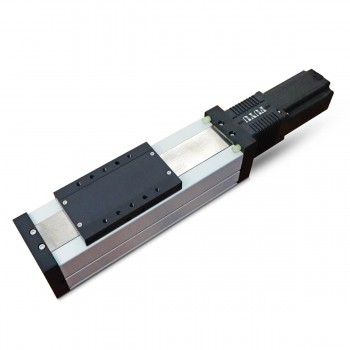1. Basic introduction to hybrid stepper motor
A hybrid stepper motor is a type of electric motor that combines the features of both permanent magnet and variable reluctance stepper motors, offering higher torque and precision than either type alone. It achieves this by having a rotor with permanent magnets and a stator with electromagnets, which interact to create precise rotational movement in discrete steps when energized by electrical pulses.
2. Working principle of hybrid stepper motor
Hybrid stepper motors operate by precisely controlling the energization of stator windings to rotate the rotor in discrete steps. This is achieved by creating a magnetic field that interacts with the permanent magnets embedded in the rotor, causing it to move in alignment with the field's direction. The step angle, or the amount of rotation per step, is determined by the motor's design, including the number of rotor teeth and stator poles.
3.Advantages of hybrid stepper motor
1. High Positional Accuracy and Precision:One of the most significant advantages of hybrid stepper motors is their exceptional positional accuracy and precision. These motors can move in very small increments, typically 1.8 degrees per step. With precise control of each step, hybrid stepper motors provide highly accurate positioning, making them ideal for applications requiring precise movements, such as 3D printers, CNC machines, and medical equipment.
2. High Torque at Low Speeds:Another advantage of hybrid stepper motors is their ability to provide high torque even at low speeds. This characteristic is particularly useful in applications where the motor needs to start and move heavy loads, such as in industrial automation and robotics.
3. Open-loop Control:Hybrid stepper motors operate in open-loop control systems, which means they do not require feedback sensors to determine the rotor position accurately. This feature simplifies the control process and reduces system complexity. Open-loop control also eliminates the need for additional sensors, making the overall system more cost-effective.
4. Compact Size and High Power Density:Hybrid stepper motors are known for their compact size and high power density. The compact design makes them suitable for applications with limited space, such as small-scale automation systems and portable devices. Despite their small size, hybrid stepper motors can deliver mechanical power comparable to larger motors, thanks to their high power density.
5. Cost-effective Solution:Hybrid stepper motors offer a cost-effective solution compared to other motor types, such as servo motors. They have a relatively lower price point, making them more accessible for many applications. Additionally, the absence of feedback sensors further reduces the overall cost of the system.
4.Main applications of hybrid stepper motor
1.Robotics and Automation:Hybrid stepper motors are commonly used in robotics and automation due to their ability to provide precise and reliable motion control. These motors are essential for controlling the movement of robotic arms, grippers, and other automated systems. With their high torque output and accurate positioning capabilities, hybrid stepper motors play a crucial role in ensuring the smooth and efficient operation of robotic applications.
2.3D Printing and Additive Manufacturing:The use of hybrid stepper motors in 3D printing and additive manufacturing has revolutionized the way objects are produced. These motors are used to precisely control the movement of the print head and build platform, enabling highly accurate and intricate 3D printed designs. Hybrid stepper motors are favored in 3D printing for their ability to provide high-resolution and smooth motion, resulting in superior print quality.
3.CNC Machining and Milling:In CNC (Computer Numerical Control) machining and milling, hybrid stepper motors are widely used to drive the movement of cutting tools and workpieces with exceptional precision. These motors are capable of providing the high torque required for heavy-duty machining operations, while also delivering the accuracy needed for intricate and complex part production.
4.Medical Devices and Imaging Systems:Hybrid stepper motors play a critical role in medical devices and imaging systems, where precision and reliability are paramount. These motors are commonly employed in applications such as MRI machines, CT scanners, robotic surgery systems, and laboratory automation equipment. With their ability to deliver consistent and controlled motion, hybrid stepper motors contribute to the advancement of medical technology by enabling more accurate diagnostics, minimally invasive procedures, and improved patient care.
5.Automotive Systems and Electric Vehicles:In the automotive industry, hybrid stepper motors are utilized in a wide range of applications, including fuel injection systems, HVAC (heating, ventilation, and air conditioning) actuators, power seats, and electric power steering. With the shift towards electric and hybrid vehicles, the demand for hybrid stepper motors continues to rise as they are essential for controlling various vehicle components with precision and efficiency.















